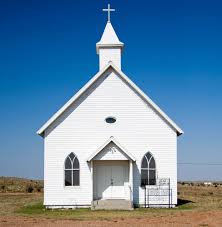Services
06:00 a.m. 08:15 a.m 09:30 a.m. 05:30 p.m. (English)
07:00 a.m. (Konkani)
The present Church of Our Lady of Glory which celebrated its centenary in 2013 was built in 1912 and completed in 1913. Previously the Church stood in Mazagaon for over three centuries.
The origin of the Gloria church at Mazagaon can be traced to a private chapel which was built around 1548. The chapel was a part of the large manor of Captain Antonio Passao.
As Mazagaon rose in importance and population, and as the number of Catholics (whether of Portugese descent or Koli converts) increased, the private chapel naturally proved inadequate to the needs of the times. The widow of Lionel de Souza Lima, Captain of the Fort of Bassein, had the chapel pulled down to build a church on the same site (Circa 1596). Between 1660 and 1671 Christovao de Souza deTavora not only enlarged the Church at his own expense, but instituted a fund ‘for the said Church and expenses, of the feast therein’.
In 1794, the Holy See made a division of the Churches in Bombay. Some were left to the care of Portugese Bishops and their priests (Padroado); others were entrusted to a new Roman Organisation (Propaganda ‘Fide). Gloria Church fell to the share of Padroado. However, in 1794 a section of its parishioners changed their allegiance to the “Propaganda Jurisdiction” for whom the Rosary Church was built in Mazagaon.
In 1810, the old Church being in a bad condition and being likely to collapse, was pulled down and rebuilt. The new Church at Mazagaon was blessed on October 1, 1811 Rev. Joao de Souza Silva, sepecially sent as Visitor by the Archbishop of Goa for the purpose. The Church was consecrated by Archbishop Silva Torres on February 14, 1844.
Various improvements were made to the Church in the second half of the 19th Century. Some structural repairs were made in 1867. In 1884 the body of the Church was paved with marble slabs. In 1892 the whole church was repainted and many repairs carried out. The sacristy was paved with marble in 1898.
In 1908 the Government published a notice in its Gazette stating that the land on which the Gloria Church and its parish house stood was earmarked for acquisition under the compulsory Acquisition Act for the proposed Bombay Port Trust Railway.
The Diocesan Authorities were reluctant to hand over the church building and the property. They entered into negotiations with the Port Trust Authorities. Finally in 1910, the Diocese accepted a compensation of rupees two lakhs from the Port Trust and the church was demolished.
The site of the original Gloria Church was in due course handed over to the Port Trust, which pulled it down for running its line. On this site, came up Anderson House in 1924. The parochial house was, however, retained and used as a residence. A cross that stood in the church compound was retained till 1926 when it was shifted to a new location near Hospital lane, Mazagaon. On the pedestal of this cross there is an inscription which states, ‘This Old Gloria Church cross which formerly stood on this site now occupied by Anderson’s House was removed on 29-05-1926 to this spot granted by the Bombay Port Trust and the cost of erection borne by public subscription.’
